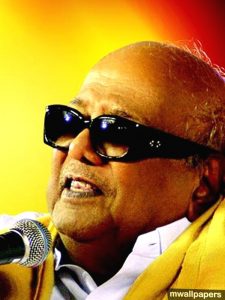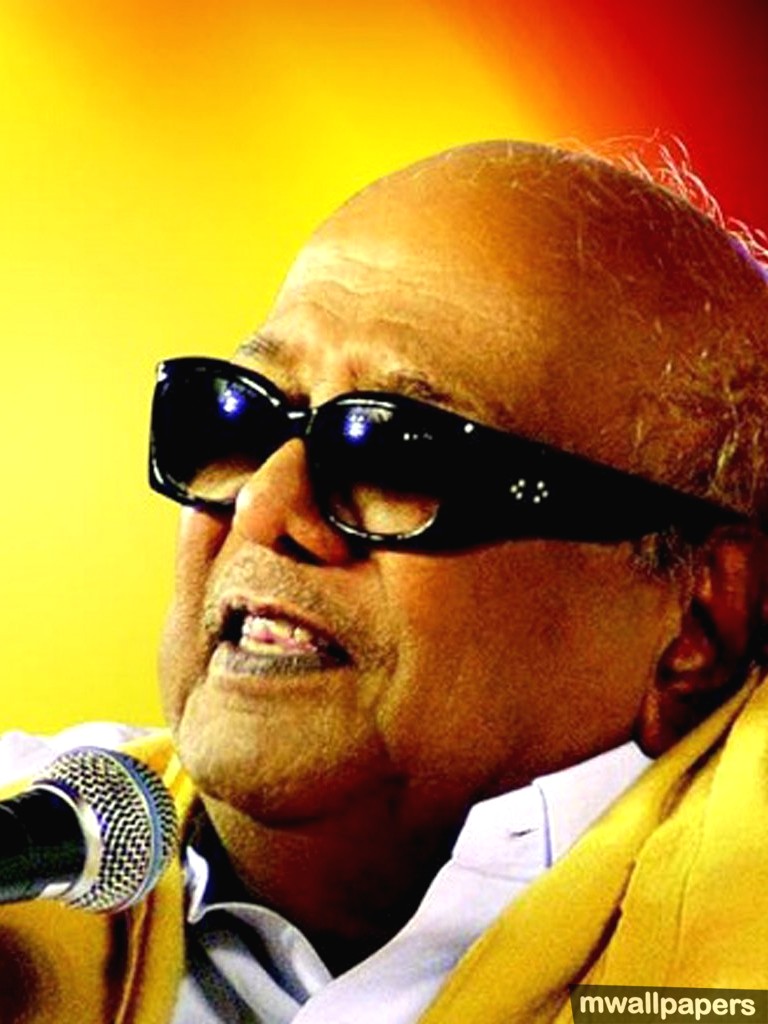
In the passing of DMK president Muthuvel Karunanidhi at the age of 94 after a prolonged illness, Tamil Nadu has lost one of the tallest leaders of the Dravidian movement and the nation a veteran politician who brought regional parties to the national stage to usher in a coalition era and thereby realised his long-term goal of federalism at the Centre and autonomy at the state-level.
In a public life spanning over seven decades, Karunanidhi dominated the political scene in Tamil Nadu. He served as chief minister for five terms, though only some lasted the full term. If Kamaraj was acclaimed as the cleanest leader the country had seen who had an unbroken stint of nine years as chief minister, DMK founder CN Annadurai had the record of having brought the party to power in the third election it faced in 1967,

But Annadurai remained chief minister only for a year as he died in February 1969 after bringing the Congress rule in the state to an end in 1967. Karunanidhi, who succeeded Annadurai and pipped senior rivals to the post, took over the leadership of the party on 26 July, 1969. And Karunanidhi’s health turned critical as his leadership of the party entered the 50th year.
While Karunanidhi led the party in good times and bad, his tenures as chief minister were marked by controversies. He had the dubious distinction of his ministry having been dismissed twice: in January 1976 and again in January 1991.
For all that, Karunanidhi’s decision to go in for simultaneous elections to the state Assembly, along with the Lok Sabha polls in 1971 that Indira opted for, paid handsome dividends for him. While Indira swept to power at the national level, DMK under Karunanidhi won 184 out of 234 Assembly seats, a record neither his successor MGR nor Jayalalithaa could break. The brute majority that the DMK got saw Karunanidhi rule with an iron fist and seeking to crush MGR’s fledgling AIADMK. But it only rebounded on him and forced him into political exile for almost 13 years.Karunanidhi, though known as a wily politician, made tactical blunders. For instance, it was matinee idol MG Ramachandran who helped Karunanidhi become chief minister after the passing of Annadurai in 1969 and yet Karunanidhi forced MGR out of the party in 1972 because he saw him as a threat. And MGR, who had no serious political ambitions till his expulsion from the DMK, formed the AIADMK and captured power in 1977. And ruled till his death in December 1987.
When Indira dismissed his government in 1976, Karunanidhi turned virulently against her. And yet, after the Janata government collapsed and she was seen to be on the comeback trail in 1980, he renewed his alliance with her, principles be damned. The 1980 Lok Sabha elections saw the AIADMK trounced in the state. And on the strength of that, Karunanidhi got the MGR government dismissed by Indira. The people brought MGR back to power and it was this vicious streak in him that made MGR call him “an evil force”, an impression that got stuck in the minds of the people.
Karunanidhi’s tenure from 1971 to ’76 was also marked by what Sarkaria Commission called “scientific corruption”. It was a different matter that what Karunanidhi started in lakhs, MGR took to crores and Jayalalithaa to multi-crores. People condoned MGR’s corruption because of his legendary philanthropic disposition. Jayalalithaa’s corruption caught up with her only at the fag end of her career with a special Bengaluru court convicting her. But the corruption stigma refused to leave Karunanidhi.
With such mass leaders, the narrative politics in Tamil Nadu became personality-oriented. So people had to choose: MGR or Karunanidhi and later Jayalalithaa or Karunanidhi. As long as MGR lived, he reigned. After his passing, people never gave a second term either to Karunanidhi or Jayalalithaa. This made the two leaders feel that regardless of what good they do for the people, they vote for change. So, why not loot and scoot?
Another major stigma attached to Karunanidhi was promotion of family rule. Though MGR also groomed Jayalalithaa, it was not on a scale Karunanidhi did with his family members. When the AIADMK-Congress alliance swept the Lok Sabha elections in Tamil Nadu, Rajiv Gandhi lost at the national level. VP Singh, who was voted to power, asked Karunanidhi to nominate a minister and he promptly picked his nephew Murasoli Maran.
The same story was repeated when Karunanidhi gave 40 Lok Sabha seats on a platter to Sonia in 2004 and as a reward, she gave him 15 berths in UPA-I. And so, key portfolios went to Dayanidhi Maran, A Raja and TR Balu. It was the corruption of the DMK nominees which brought disrepute to the UPA regime.
Karunanidhi’s last term as chief minister (2006-2011) was a repeat of his earlier tenure (1971-1976), except the family members controlled every field and corruption was everywhere, but there was no violence, unlike before. It was this revulsion which enabled Jayalalithaa to secure a second consecutive term in 2016, though Stalin won nearly 90 seats. As Karunanidhi was around, he was naturally projected as chief minister if the DMK was voted to power and this went against Stalin.
After Kamaraj and Annadurai, it was Karunanidhi who had a wide circle of friends at the national level. Earlier, his national politics was rooted in anti-Congress-ism after Indira dismissed a series of state governments starting with Farooq Abdullah’s, extending to NT Rama Rao’s and ending with DMK’s D Ramachandran in Puducherry.
And as a reaction to that the National Front was born in Chennai thanks to Karunanidhi, with VP Singh, Rama Rao and other national leaders including Atal Bihari Vajpayee addressing a massive rally.
It led to the National Front government between 1989 and 1990. The DMK under Karunanidhi was a key partner in the United Front government in 1996. While both proved to be short-lived, Karunanidhi thereafter gave up his opposition to the BJP and joined the NDA under Vajpayee, calling him “the right man in the wrong party”.
The DMK enjoyed power at the Centre from 1999 to 2004 when Karunanidhi pulled out his party to go with Sonia as part of the UPA, which ruled for ten years from 2004. Such was his clout with Sonia that he refused to share power with the Congress at the state level, though he led a minority government from 2006 to 2011.
Politics apart, Karunanidhi was credited with social reforms he brought about such as reservation for the Other Backward Classes, equal share in property for women and enactment of a law to make men from all castes priests in Hindu temples.
In the ultimate analysis, Karunanidhi was the kind of man you could hate or love, but could not ignore.
Click here to follow news updates on Karunanidhi’s demise.




